Otoplasty in Japan
Search and Compare the Best Clinics and Doctors at the Lowest Prices for Otoplasty in Japan

Find the best clinics for Otoplasty in Japan
No clinics available
Egypt offers the best prices Worldwide
Price: $ 100

- Home
- Japan
Compare Before & After Photos of _procedure_photos.phpOtoplasty
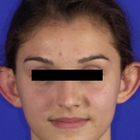
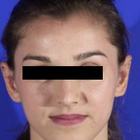
Front view
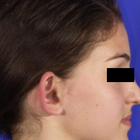
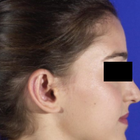
Full-side view
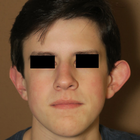

Front view

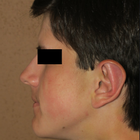
Full-side view
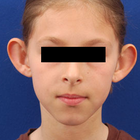
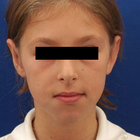
Front view
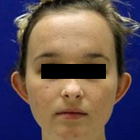
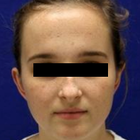
Front view
WHY US?
At Medijump, we're making medical easy. You can search, compare, discuss, and book your medical all in one place. We open the door to the best medical providers worldwide, saving you time and energy along the way, and it's all for FREE, no hidden fees, and no price markups guaranteed. So what are you waiting for?

Free

Best Price

Widest Selection

Risk-Free
What you need to know about Otoplasty in Japan

Otoplasty, also referred to as cosmetic ear surgery, is a type of cosmetic procedure to change the size, shape, or position of the ear. It is performed on the visible part of the outer ear, called auricle. Some people choose to have the surgery to correct odd-shaped ears due to an injury or birth defect. Others have it because they are concerned with how their ears protrude too far from their head. Otoplasty can be performed at any age after the ears have reached their full size, generally after age 5. In some cases, the surgery may be done as early as age 3.
There are several types of otoplasty. The following are the most common:
- Ear pinning draws the ears closer to the head. It is usually done on people whose ears stick out too far from their head.
- Ear augmentation is ideal for individuals whose ears are small or have not completely developed. This type of otoplasty can increase the size of the outer ear.
- Ear reduction is usually done on people with macrotia, which is a condition when the ears are larger than normal. Otoplasty can reduce the size of the ears.
What does a Otoplasty Procedure Involve?
Otoplasty is typically carried out under local anesthesia with a sedative, so you will be awake but you will not feel any pain. In some cases, general anesthesia may be used, typically for younger children.
The techniques used by your surgeon vary based on the type of otoplasty you are having. In general, your surgeon makes an incision either within the inner creases of your ears or on the backs of your ears. Then, your surgeon manipulates the tissue of the ear, which may include removal of cartilage or skin, grafting of cartilage to the ear, or folding and shaping of cartilage using permanent stitches. Once your surgeon is done correcting the shape, size, and position of your ears, the incisions are closed with stitches.
How Long Should I Stay in Japan for a Otoplasty Procedure?
Otoplasty can take between 1 and 3 hours to perform, depending on the complexity and the specifics of the procedure. It is typically done as an outpatient procedure, which means you can leave the hospital on the same day. It is recommended that you stay in Japan for 7 more days for follow-up checkups and removal of stitches.
What's the Recovery Time for Otoplasty Procedures in Japan?
The recovery period may vary from one person to another. You may experience numbness for several weeks, and mild bruising for about 2 weeks. For several months, your ears may feel stiff and sore.
You should be able to go back to work and resume your normal activities, including exercise, within one to two weeks after surgery. Physical contact sports, such as rugby, football, or judo, should be avoided for at least 3 months. You should also avoid swimming for up to 8 weeks following your otoplasty.
What sort of Aftercare is Required for Otoplasty Procedures in Japan?
Your surgeon will provide post-operative instructions. Make sure to follow the instructions carefully to promote smooth and quick recovery. You should rest with your head elevated on 2-3 pillows to minimize swelling. It is recommended that you eat a light, soft, and cool diet for several days. Take pain medication as prescribed by your doctor. Avoid sleeping on your side or rub the incisions to keep pressure off your ears. Consider wearing shirts with loose-fitting collars or button-down shirts.
What's the Success Rate of Otoplasty Procedures in Japan?
Otoplasty is a safe and effective procedure, with high satisfaction rates. More than 90% of people who had the procedure claimed to be extremely happy with the results. Note that it may take some time for the result to be fully visible.
While it is a safe procedure, you still need to be aware of possible risks and complications that otoplasty carries. These include bleeding, hematoma formation, infection of the skin, infection of the cartilage of the ear, permanent or temporary numbness around the affected area, scar or keloid formation, unfavorable results, prolonged pain, narrowing of the external ear canal, impaired healing, changes in skin sensation, asymmetry, and overcorrection.
Are there Alternatives to Otoplasty Procedures in Japan?
There are not many viable alternatives to otoplasty as of yet. One of the most popular alternatives is nonsurgical otoplasty, which does not require any incisions. The procedure uses special sutures to pin the ears back and achieve a more symmetrical look. These sutures are woven into the ears and will remain in place permanently. They are also virtually invisible, so the results will look natural.
For babies under three months old with prominent ears, ear-molds can be taped to their ears to reshape the ears without surgery. This type of treatment typically takes about six to eight weeks.
What Should You Expect Before and After the Procedure
Before otoplasty, you may have prominent or large ears or other deformity caused by an injury or birth defect that bothers you. Some people also feel self-conscious and embarrassed by the shape, size, and position of their ears. After the procedure, your ears will be corrected. Small or underdeveloped ears will be augmented to increase the size, the size of large ears will be reduced, and prominent ears will be drawn closer to the head. Your appearance will improve and you may feel more confident.
Whilst the information presented here has been accurately sourced and verified by a medical professional for its accuracy, it is still advised to consult with your doctor before pursuing a medical treatment at one of the listed medical providers
No Time?
Tell us what you're looking for and we'll reachout to the top clinics all at once
Enquire Now

Popular Procedures in Japan
Prices Start From $28

Prices Start From $1,945

Prices Start From $120

Prices Start From $275

Recommended Medical Centers in Japan for procedures similar to Otoplasty

- Interpreter services
- Translation service
- Religious facilities
- Medical records transfer
- Medical travel insurance
- Health insurance coordination
- TV in the room
- Safe in the room
- Phone in the room
- Private rooms for patients available

- Interpreter services
- Translation service
- Religious facilities
- Medical records transfer
- Medical travel insurance
- Health insurance coordination
- TV in the room
- Safe in the room
- Phone in the room
- Private rooms for patients available

- Interpreter services
- Translation service
- Religious facilities
- Medical records transfer
- Medical travel insurance
- Health insurance coordination
- TV in the room
- Safe in the room
- Phone in the room
- Private rooms for patients available

- Interpreter services
- Translation service
- Religious facilities
- Medical records transfer
- Medical travel insurance
- Health insurance coordination
- TV in the room
- Safe in the room
- Phone in the room
- Private rooms for patients available
Otoplasty in and around Japan
About Japan
Japan is special in its own way; the culture, food, people, as well as technology are envied by the world over. With old Japan, comes the ancient tradition in the form of a geisha performance, onsen (hot spring) visit in the mountains, tea ceremony, or shrine visit. In contrast, there is modern Japan, full of smart systems and electronics, colorful advertisements and displays, and ultra-modern architecture. In recent years, Japan has become one of the top destinations in the world for oncology treatments and sees many tens of thousands of medical tourists each year. Many of these travel from within the region, including China and Korea, but they are unable to compete with the SE Asian nations with prices. Private hospitals are located across the country, with a particular focus in major cities like Tokyo, Kyoto, and Osaka. 25 of these facilities are JCI-accredited, with many offering Otoplasty procedures.
Popular Parts of Japan
Located in the Pacific Ocean, Japan is a stratovolcano archipelago. The four largest islands are Honshu, Hokkaido, Kyushu, and Shikoku. With a population of 127 million, 98% are ethnic Japanese. The country perfectly balances traditional with modern technology. Tourists will first see its exceptionally modern face, but after traveling around, they will find many opportunities to connect with the beautiful traditional culture.
- Tokyo is Japan’s capital, one of the 47 prefectures of Japan. It’s a huge metropolis that offers traditional arts and culture, futuristic infrastructures, and good restaurants. The cherry blossoms that bloom in Spring is one of the most popular sights. The soft pink petals are an icon of the country. There is an unlimited choice of shopping, many museums that cover every era of Japanese art history, and even a robot restaurant.
- Kyoto is made of religious architecture, with around 2000 temples and shrines. It moves at a slower pace than any other city in Japan. Filled with samurais, geishas, Zen gardens, and the torii gate, Kyoto is the spiritual center of Japan. The city is also known for its food, head to the Nishiki Market, a four-hundred-year-old local food market that offers a range of national cuisine to modern food from all over the world.
- Osaka, the second largest metropolitan area after Tokyo is known to be the most delicious city. The city is nicknamed “the nation’s kitchen.” Visit Dotonburi to experience the food culture of Osaka. Besides the food, there are numerous attractions that tourists should visit such as Universal Studios Japan, Cup Noodles Museum, Aquarium Kaiyukan, Osaka Castle, and Umeda Sky Building.
- Fukuoka has a welcoming feel with sunny weather and so much to do. It’s made up of two towns, the port city of Hakata and the former castle town of Fukuoka. Visit the impressive Fukuoka Castle, explore the Sumiyoshi-Jinja Shrine, learn history in Kyūshū National Museum, experience the ancient art of calligraphy and origami in Hakata Machiya Folk Museum, and enjoy a calming bath in one of the Onsen hot springs.
- Nagoya is the industrial center of Japan. It’s the birthplace of Toyota and a popular pinball-style game Pachinko. Although many of the historic buildings were destroyed in the air raids of 1945, tourists can still indulge in its culture and tradition. Visit the Nagoya Castle that was reconstructed in 1959, walk around the Atsuta Shrine, or see the history of the automobile in the Toyota Automobile Museum.
Weather and Climate in Japan
Japan has four distinct seasons.
- Summer starts in June and lasts until August. The temperature can get very hot, up to 40 °C in some places, with high humidity. June is the rainy season where the farmers plant their rice. The rainy season is over in August but the typhoon season starts to peak.
- Autumn starts in September and ends in November. September has the greatest risk of typhoons. The weather is generally mild. October is pleasantly warm with less humidity than in summer, making it a food time for traveling the country.
- The temperature will drop in Winter. It lasts from December to February and is usually dry, pleasant, and sunny. The average temperature is around 2°C to 12°C, it rarely drops below 0°C. The northern island of Hokkaido, the Japan Alps, and the Japan Sea coast get a lot of snow while Tokyo gets very little snow.
- Spring is said to be the best time to visit Japan because of its mild weather and cherry blossoms. The season starts in March and ends in May. The temperature will gradually increase during spring with little rainfall and clear sky.
Getting Around in Japan
The main airport for international tourists is the Narita International Airport. It is located around 60km east of central Tokyo. It serves both domestic and international flights to almost every major city around the globe. There are several budget airlines that operate flights from this airport, namely Jetstar Japan, Eastar Jet, and Peach. There are other international airports such as Kansai International Airport, New Chitose International Airport, and Kyushu Saga International Airport.
To get to Tokyo from Narita Airport, tourists can use the rail, bus, taxi, or car rental. The most affordable train line is the Keisei Line that connects with the Toei Asakusa Subway Line and the Yamanote Line, it costs around ¥1,190 to ¥1,230 ($10 to $11.3). There’s also the Sky Access Express train that offers better access to Tokyo, a trip to Asakusa will cost around ¥1,290 ($11.9) and take about 58 minutes. The quickest way to get to Tokyo will be by the Skyliner train, it takes just 36 minutes to Nippori and will cost around ¥2,470 ($22.7). The airport introduced N’EX Tokyo Round-Trip ticket for foreign passport holders that provides round-trip travel from Narita to Tokyo and back for ¥4,000 ($37) for adults and ¥2,000 ($18.4) for children.
A regular taxi from Narita to Tokyo is very expensive, usually over ¥20,000 ($184). The best option is the shared minibus that starts with ¥6,180 ($57) per person. Buses are usually more affordable, the Limousine Bus costs ¥2,880 ($26.5) and the Tokyo Shuttle costs around ¥900 ($8) to ¥1,000 ($9).
Getting around Japan is fairly easy because the country has excellent public transportation. It is recommended to get a Japan Rail Pass. Japan’s bullet train is fast but expensive. There are cheaper train options. Buses are less expensive but will take more time than trains.
Tourist Visas in Japan
Citizens of 68 countries and territories can enter and stay in Japan for up to 90 days without a visa. Citizens of Indonesia, Brunei, and Thailand are granted a 15-day visa-free trip to Japan. Citizens of the United Arab Emirates are allowed to stay for 30 days without a visa. It is advisable to contact the nearest Consular Section of the Embassy or Consulate General of Japan for more information.
Additional Information
- Local Currency: Yen (¥) is the local currency. $1 will get you ¥11 ¥1,000 is worth approximately $9.
- Money & Payments: ATMs are usually located in post offices and convenient stores. There are only a few branches of major Japanese banks that accept foreign-issued cards. Credit cards are accepted in major cities, but the rural area doesn’t. It’s best to always bring cash and bring a coin purse because everything below ¥500 is coins. Tipping is not mandatory, high-end hotels and restaurants usually add a 10% service fee to the bill.
- Local Language: The official language is Japanese. English is common in major cities with many tourists such as Tokyo, Osaka, and Tokyo. Some restaurants write their menu in English and Japanese.
- Local Culture and Religion: The dominant religion in Japan is Shinto and Buddhism. There’s a small group of Christians as well.
- Public Holidays: Japan has sixteen national holidays each year, including Children’s Day, Constitution Memorial Day, and Marine Day. The country hosts numerous annual festivals such as Gion Matsuri in Kyoto, Awa Odori in Tokushima, and Yuki Matsuri Snow Festival in Sapporo.
Popular Searches
- Plastic Surgery in Thailand
- Dental Implants in Thailand
- Hair Transplant in Thailand
- Breast Augmentation Thailand
- Gastric Sleeve in Thailand
- Gender Reassignment Surgery in Thailand
- Laser Hair Removal in Bangkok
- Botox in Bangkok
- Dermatology in Bangkok
- Breast Augmentation in Bangkok
- Coolsculpting in Bangkok
- Veneers in Turkey
- Hair Transplant in Turkey
- Rhinoplasty in Turkey
- Stem Cell Therapy in Mexico
- Rhinoplasty in Mexico
- Liposuction in Mexico
- Coolsculpting in Tijuana
- Rhinoplasty in Korea
- Scar Removal in Korea
- Gastric Sleeve in Turkey
- Bone Marrow Transplant in India
- Invisalign in Malaysia
- Plastic Surgery in the Dominican Republic
- Tummy Tuck in the Dominican Republic
- Plastic and Cosmetic Surgery in Poland
- Rhinoplasty in Poland
- Hair Implant in Poland
- Dental Implants in Poland
- IVF in Turkey